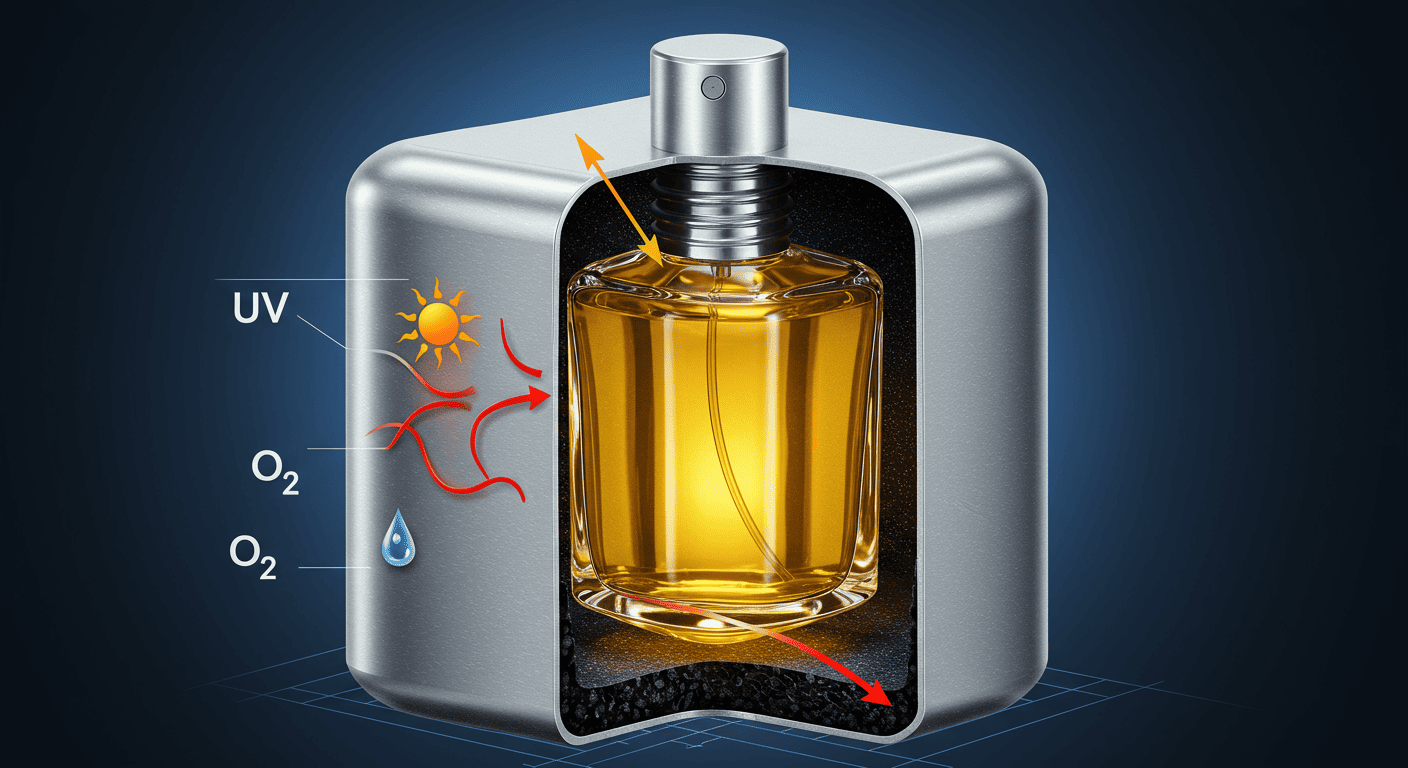The canister of a paris montale parfum is an icon of defiance in a world dominated by transparent glass. This stark, metallic cylinder is not an arbitrary design choice but a deliberate application of material science, engineered to combat the inevitable decay that threatens every fragrance. Within the fragile walls of a typical perfume bottle, the scent’s complex chemistry is under constant assault from common environmental factors.
Light, air, and heat are the primary antagonists in this process, each acting as a catalyst that unravels the perfumer’s intricate work molecule by molecule. Montale’s response is to reject tradition and place its creations within a protective aluminum enclosure. This decision systematically neutralizes the main vectors of degradation, creating a perfectly stable and shielded habitat for the liquid inside.
This commitment to long-term preservation is the final, crucial step in a supply chain built on value. It honors the investment made at the very beginning of the process, where the principles of sustainable ingredient economics determine the quality and cost of the precious raw materials that form the heart of the scent.
The Corrosive Effect of Light
Sunlight, for all its beauty, is a potent enemy of fragrance. Its invisible ultraviolet (UV) rays carry enough energy to act as microscopic wrecking balls, snapping apart the delicate chemical bonds of aromatic molecules. This process, known as photolysis, permanently alters the scent’s structure, often introducing sharp, unpleasant notes or causing the fragrance’s most vibrant elements to simply fade into nothingness.
A standard clear glass bottle, while beautiful, is essentially invisible to this threat, allowing damaging radiation to pass through unhindered. Even tinted glass offers only partial defense. The Montale canister, by virtue of its completely opaque aluminum construction, functions as a total blackout chamber, providing an absolute blockade against light.
No photons can penetrate its walls, meaning the chemical reactions they trigger are stopped before they can even begin. This places the perfume in a state of near-perfect stasis, safe from the corrosive effects of light. The integrity of the scent is thus preserved not for months, but for years.
The Anodized Inner Sanctum
The true innovation of the bottle is not just its material, but its treatment. The aluminum undergoes an electrochemical process called anodization, which grows a hard, ceramic-like layer of aluminum oxide directly from the base metal. This integrated surface is fundamentally different from a simple coating; it is a permanent, non-reactive inner sanctum for the fragrance.
This passivated layer is the key to the bottle’s performance, providing a comprehensive defense system that renders the container chemically aloof from its contents. Its functions are critical and multifaceted:
- It establishes a non-reactive barrier, preventing any possible interaction between the perfume’s alcohol base and the metal.
- Its non-porous nature creates a hermetic seal against the ingress of atmospheric oxygen.
- The hardened surface resists scratches and physical damage, maintaining the integrity of the seal.
- It ensures the container is both remarkably lightweight and structurally robust.
Deflecting Heat and Oxygen
The second catalyst of fragrance decay is oxygen, which causes slow, creeping oxidation. This is the same chemical process that rusts iron or browns a sliced apple. Over time, oxygen exposure can flatten a perfume’s bright top notes and give the entire composition a stale, lifeless character. The airtight seal of the Montale bottle drastically minimizes this risk by preventing fresh oxygen from entering.
Heat acts as an accelerator for all these negative reactions, essentially “cooking” the fragrance and speeding up its demise. Aluminum helps mitigate this by being an excellent thermal conductor. Instead of absorbing and holding heat like a glass bottle might in a sunbeam, the aluminum canister quickly reaches equilibrium with the surrounding air, helping to shed excess heat and protect the liquid from sustained thermal stress.
This diligent management of the perfume’s micro-environment is what underpins the stability of the house’s famously potent creations. By building a functional fortress against the elements, Montale ensures the perfumer’s vision remains intact.
The Ideal of Absolute Neutrality
The ultimate ambition for any vessel containing a fine fragrance is to be a silent guardian—a container that exerts zero influence on its contents. While glass is relatively inert, its transparency is a fatal flaw. Anodized aluminum, in contrast, achieves a near-perfect state of chemical and physical impassivity.
This ensures that the scent inside remains pure and untainted by its surroundings or by the container itself. The consumer experiences the fragrance exactly as the artist composed it, free from the discordant notes introduced by molecular decay. For a brand like Montale, known for using powerful and often volatile natural extracts, this guarantee of preservation is not a luxury; it is a necessity.
In choosing robust functionality over fragile tradition, Montale communicates a clear philosophy: the art inside the bottle is more important than the bottle itself. The sleek canister is a testament to this, a piece of deliberate engineering designed for one purpose—to deliver a perfect, unchanged scent from the first spray to the last.
Frequently Asked Questions
This is a common misconception. The manufacturing process for a high-quality, custom-shaped, and properly anodized aluminum bottle with a specialized atomizer is technologically complex and expensive. The cost is often comparable to, if not greater than, that of producing custom luxury glassware. The choice is based on superior performance, not price.
No, there is no risk of contamination. The anodization process creates a chemically inert barrier of aluminum oxide on the bottle’s interior. This inert layer prevents the liquid perfume from ever coming into contact with the raw aluminum, a principle widely used in food-grade packaging and high-end cookware to ensure absolute safety and purity.
The dominance of glass is deeply rooted in centuries of tradition and consumer perception. The visual appeal of seeing the colored liquid, combined with the reassuring heft of a heavy glass bottle, has become synonymous with luxury. Many brands prioritize this established aesthetic and tactile experience over the technical advantages of an opaque, lightweight aluminum design.

